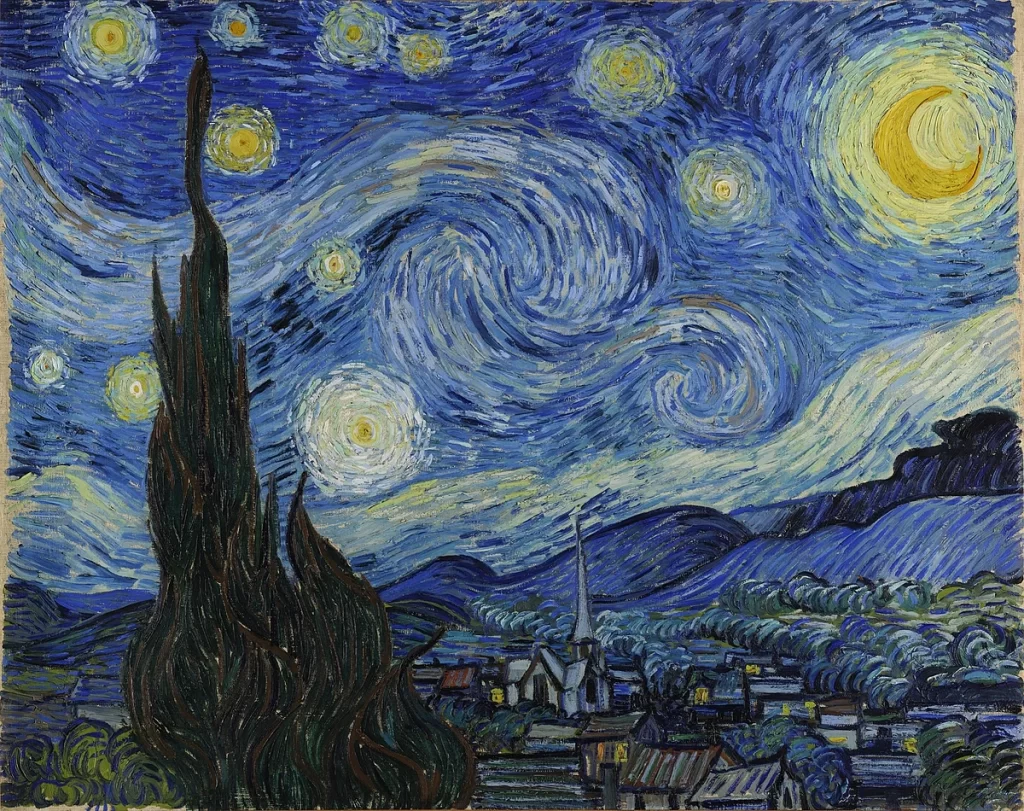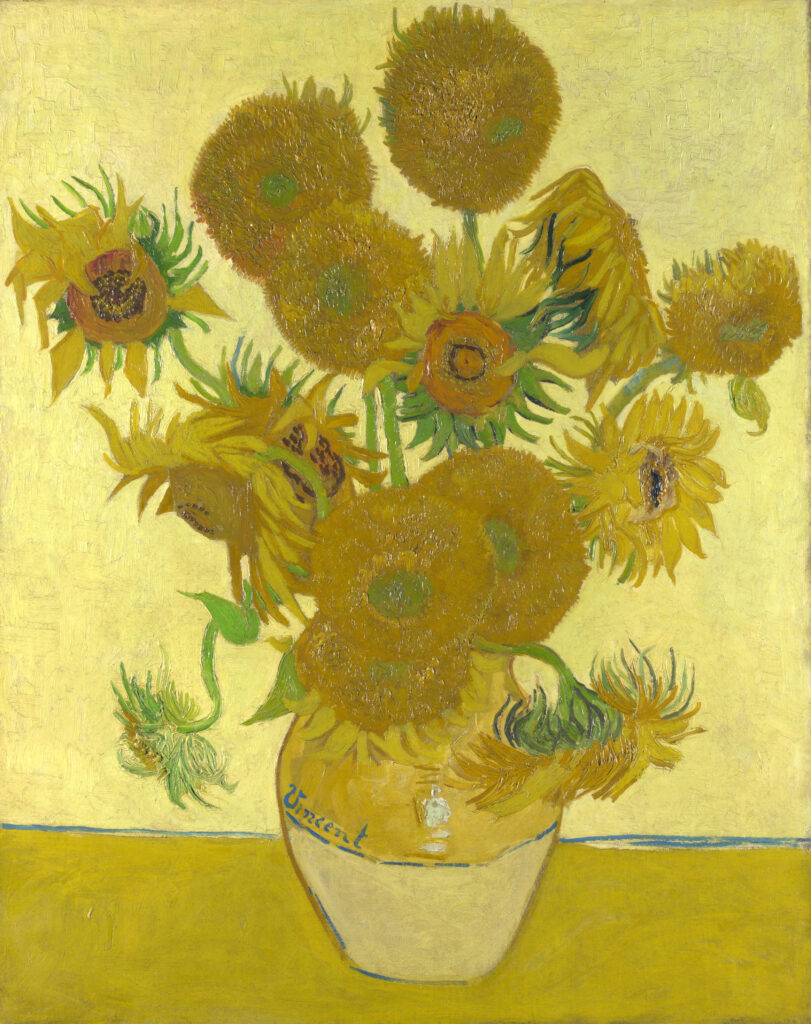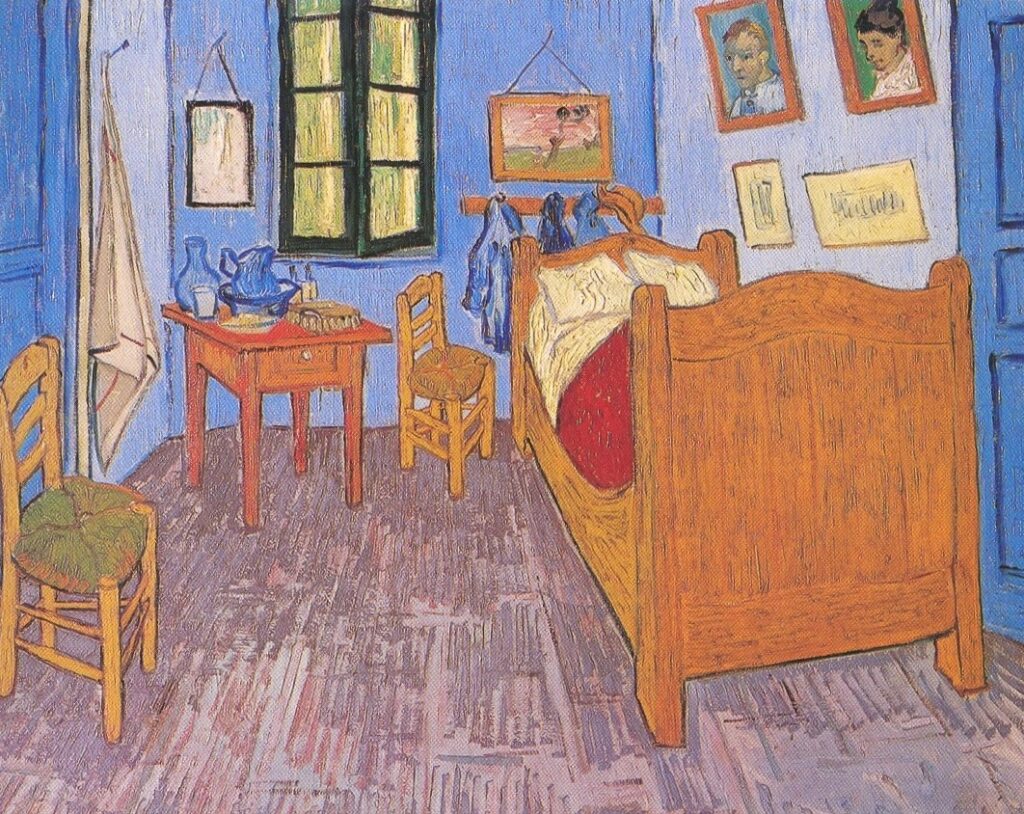Vincent van Gogh’s art has captivated audiences for generations, leaving an indelible mark on the world of painting. His unique style and emotional depth continue to resonate with art enthusiasts and casual observers alike. The popular Van Gogh paintings are not just visually stunning; they offer a window into the artist’s tumultuous life and extraordinary vision.
From the swirling skies of “The Starry Night” to the vibrant hues of his “Sunflowers” series, Van Gogh’s most famous works are must-see masterpieces. These paintings, which can be found in renowned museums from Amsterdam to New York, showcase the artist’s innovative techniques and powerful expression. Whether you’re a longtime admirer or new to Van Gogh’s art, exploring his top 10 paintings provides insight into the genius that has shaped modern art and continues to inspire creativity worldwide.
The Starry Night: A Window to Van Gogh’s Soul
Vincent van Gogh’s “The Starry Night” stands as one of the most popular Van Gogh paintings, captivating viewers with its swirling blue sky and vibrant yellow stars. Created in 1889 while Van Gogh was staying at the Saint-Paul-de-Mausole asylum in Saint-Rémy-de-Provence, France, this masterpiece offers a glimpse into the artist’s turbulent mind and his unique vision of the world.

The story behind the painting
Van Gogh painted “The Starry Night” from memory, based on the view from his asylum window. The artist was deeply moved by the night sky and constellation formations, which he endeavored to capture in his work. This blend of direct observation and imaginative reconstruction resulted in the dream-like quality that the painting is famous for.
Iconic swirling style
The painting’s most striking feature is its dynamic sky, filled with swirling clouds and bright celestial bodies. Van Gogh’s thick brushstrokes and vibrant colors create an illusion of constant motion, reflecting the artist’s emotional intensity. The cypress tree in the foreground, reaching towards the sky, serves as a visual link between the earth and the heavens.
Symbolism and interpretation
“The Starry Night” has an influence on various interpretations, with some seeing it as a representation of hope amidst turmoil. The contrast between the tumultuous sky and the peaceful village below might symbolize Van Gogh’s inner struggles. The bright stars against the turbulent backdrop are thought to represent a glimmer of hope amidst his ongoing mental turmoil.
This iconic work, now housed in the Museum of Modern Art in New York, continues to inspire and captivate audiences worldwide, cementing its place among the most famous Van Gogh paintings.
Sunflowers: Van Gogh’s Signature Series
Vincent van Gogh’s Sunflowers series stands as one of the most popular Van Gogh paintings, capturing the essence of his artistic vision. These vibrant works have become synonymous with the artist’s name, showcasing his unique style and innovative use of color.

The Arles period
During his time in Arles, France, Van Gogh created seven sunflower paintings between 1888 and 1889. This period was particularly productive, with four paintings completed in a single week of August 1888. The artist’s fascination with sunflowers grew as he prepared for the arrival of his friend and fellow painter, Paul Gauguin. Van Gogh decorated Gauguin’s room with these striking floral compositions, hoping to impress and inspire his colleague.
Symbolism of sunflowers
For Van Gogh, sunflowers represented more than just a subject for still life paintings. They symbolized gratitude, life, and the different stages of existence. The artist saw himself reflected in these flowers, appreciating their beauty even as they wilted. Van Gogh’s sunflowers became a powerful symbol of his artistic identity, with Gauguin describing them as “completely Vincent.”
Variations and versions
The Sunflowers series includes several variations, each with its own unique characteristics. Some paintings feature a green vase with three sunflowers, while others showcase up to fifteen blooms against different colored backgrounds. Van Gogh experimented with various shades of yellow, demonstrating the possibilities of creating depth and variation within a single color palette. His thick, stabbing brushstrokes gave life to the blossoms, making them appear to burst from the canvas.
These iconic works can now be found in renowned museums worldwide, from Amsterdam to New York, cementing their place among the most famous Van Gogh paintings.
The Bedroom in Arles: A Glimpse into Van Gogh’s World
“The Bedroom in Arles” stands as one of Vincent van Gogh’s most popular paintings, offering a unique peek into the artist’s personal space. This masterpiece, which Van Gogh himself considered one of his best works, depicts his room at 2 Place Lamartine in Arles, France.

The Yellow House
The painting showcases Van Gogh’s living quarters in what he called the “Yellow House.” This location held special significance for the artist, as he dreamed of establishing an artist’s collective there, a “Studio of the South.” Though this vision never fully materialized, the Yellow House became a symbol of Van Gogh’s aspirations and his search for a place to call home.
Color symbolism
Van Gogh’s use of color in “The Bedroom” is both striking and symbolic. He employed a palette of bold, expressive hues, with pale violet walls, red tiles on the floor, and yellow wooden furniture. These vibrant colors were meant to evoke a sense of rest and dreams, reflecting the artist’s desire for peace and stability. The complementary colors create a dynamic visual effect, making each shade appear more vivid and conveying the emotional resonance of the space.
Perspective and style
The painting’s perspective is notably unconventional, with an awkward and imperfect sense of depth. This stylistic choice adds to the dream-like quality of the work. Van Gogh used thick brushstrokes and strong outlines, giving the painting a distinctive, almost cartoonish appearance. This approach, combined with the simplified forms and colors, makes “The Bedroom” more about capturing the essence and emotion of the space rather than creating a realistic representation.
Self-Portrait with Bandaged Ear: A Testament to Struggle
Vincent van Gogh’s Self-Portrait with Bandaged Ear stands as one of his most popular Van Gogh paintings, offering a powerful glimpse into the artist’s tumultuous life. Created in January 1889, just a week after leaving the hospital, this work captures a pivotal moment in Van Gogh’s journey.

The infamous ear incident
On December 23, 1888, Van Gogh experienced a mental breakdown that led to the infamous ear incident. While the exact details remain debated, it’s clear that Van Gogh suffered a severe injury to his left ear. This event marked the beginning of a period of uncertainty and had a serious impact on his life.
Artistic interpretation of trauma
In the painting, Van Gogh portrays himself in a blue cap with black fur and a green overcoat, with a bandage covering his ear and extending under his chin. The artist used impasto painting strokes, laying paint thickly on the canvas to give the composition more energy and passion. This technique reflects Van Gogh’s determination to continue painting despite his struggles.
Symbolism in self-portraiture
The self-portrait serves as a powerful symbol of Van Gogh’s resilience and artistic identity. Behind him, we see a canvas on an easel and a Japanese print, highlighting his sources of inspiration. The fur cap secures his thick bandage and protects him from the winter cold, demonstrating his commitment to his craft even in harsh conditions. This painting, now housed in the Courtauld Galleries in London, remains one of the most famous Van Gogh paintings, showcasing his unique style and emotional depth.
Conclusion
Vincent van Gogh’s most popular paintings offer a window into the artist’s extraordinary vision and tumultuous life. From the swirling skies of “The Starry Night” to the vibrant “Sunflowers” series, these masterpieces showcase Van Gogh’s innovative techniques and powerful expression. His unique style, characterized by bold colors and thick brushstrokes, continues to captivate art lovers worldwide.
These iconic works, found in renowned museums from Amsterdam to New York, have a lasting impact on modern art. They not only reflect Van Gogh’s personal struggles but also his unwavering commitment to his craft. To wrap up, exploring Van Gogh’s top paintings provides insight into the genius that continues to inspire creativity and evoke deep emotions in viewers across generations.


